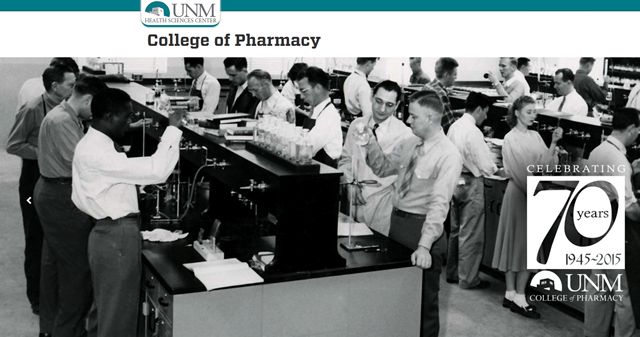
Pharmaceutical Sciences ETDs
Publication Date
Spring 4-14-2018
Abstract
The discovery of new pharmacologic targets is important for the advancement of pharmacotherapy and identification of new indications for current drugs. The aryl hydrocarbon receptor (AHR) is a physiologic sensor of both chemical environmental pollutants and ligands of natural origin. Given the broad spectrum of ligands that activate the AHR and its relationship with toxicology, the AHR is not thought to be a traditional target for pharmacotherapy. However, multiple studies have shown potential for the AHR as a novel pharmacologic target Therefore, identifying less toxic agents that modulate the AHR may elucidate mechanisms for pharmacological targeting of the AHR. The hypothesis addressed for this thesis project is that chemical libraries of established drugs can be used to map the pharmacological space of the aryl hydrocarbon receptor. Three specific aims are proposed to address this hypothesis. Specific aim 1: Develop a high throughput screening assay to identify established drugs that activate the AHR. Specific aim 2: Use a chemical library of known pharmacologically active agents to map pharmacological space of the AHR and identify a lead compound for further evaluation. Specific aim 3: Determine chemical structure activity relationship of the lead compound’s pharmacophores and AHR activation potency. The AHR assay developed for Aim 1 incorporated an AHR-responsive green fluorescence protein (GFP) reporter that could be transduced into any cell type of interest. For normalization of transduction efficiency, a dtTomato expressing vector was optimized for expression without interference of the GFP reporter. Both the human colon cancer cell line Caco2 and the liver cancer cell line HepG2 were used in these studies. Drug screening for AHR activation using the AHR assay resulted in the identification multiple ligands including a lead compound. The lead compound in this study used for further evaluation was alpha-tocopherylquinone (TQ). The quinone structure is a critical component of TQ, interestingly other AHR ligands have been found to have a quinone structure as a molecular component. (eg dioxin) However, quinone structure ability to activate the AHR is less defined compared to other compounds like polycyclic carbons. In this study, differences were observed in the toxicity and AHR activation profile of fully substituted and unsubstituted para-quinones. The findings from these experiments suggest that there is a direct relationship between the number of carbon substitutions and the potency of the para-quinone to elicit an effect on the AHR. For example, we found that benzoquinone (BQ), an unsubstituted para-quinone was a relatively potent ligand of the AHR. Furthermore, adding a single methyl group to the benzoquinone increased its potency to activate the AHR. However, further methyl substitutions to the para-quinone ring diminished the para-quinone potency to activate the AHR. A compound that supported this observation was duroquinone, a fully substituted para-quinone which showed no AHR activity in the AHR assay. This study identifies critical characteristics necessary for para-quinones to activate the AHR and gives rise to a new class of compounds with potential of becoming novel treatments for disease through AHR activation.
Fourth Committee Member
Prashant Nighot
First Committee Member (Chair)
Todd Anthony Thompson
Degree Name
Pharmaceutical Sciences
Second Committee Member
Tudor Oprea
Level of Degree
Masters
Third Committee Member
Graham S. Timmins
Department Name
College of Pharmacy
Language
English
Document Type
Thesis
Keywords
Aryl Hydrocarbon receptor, Drug Repurposing, Pharmacology, Pharmaceutical target
Recommended Citation
Borunda Duque, Teofilo. "Evaluating the Aryl Hydrocarbon Receptor as a Target for Pharmacologic Activity of Repurposed Drugs." (2018). https://digitalrepository.unm.edu/phrm_etds/19
Included in
Medicinal Chemistry and Pharmaceutics Commons, Other Chemicals and Drugs Commons, Pharmacology Commons, Toxicology Commons
